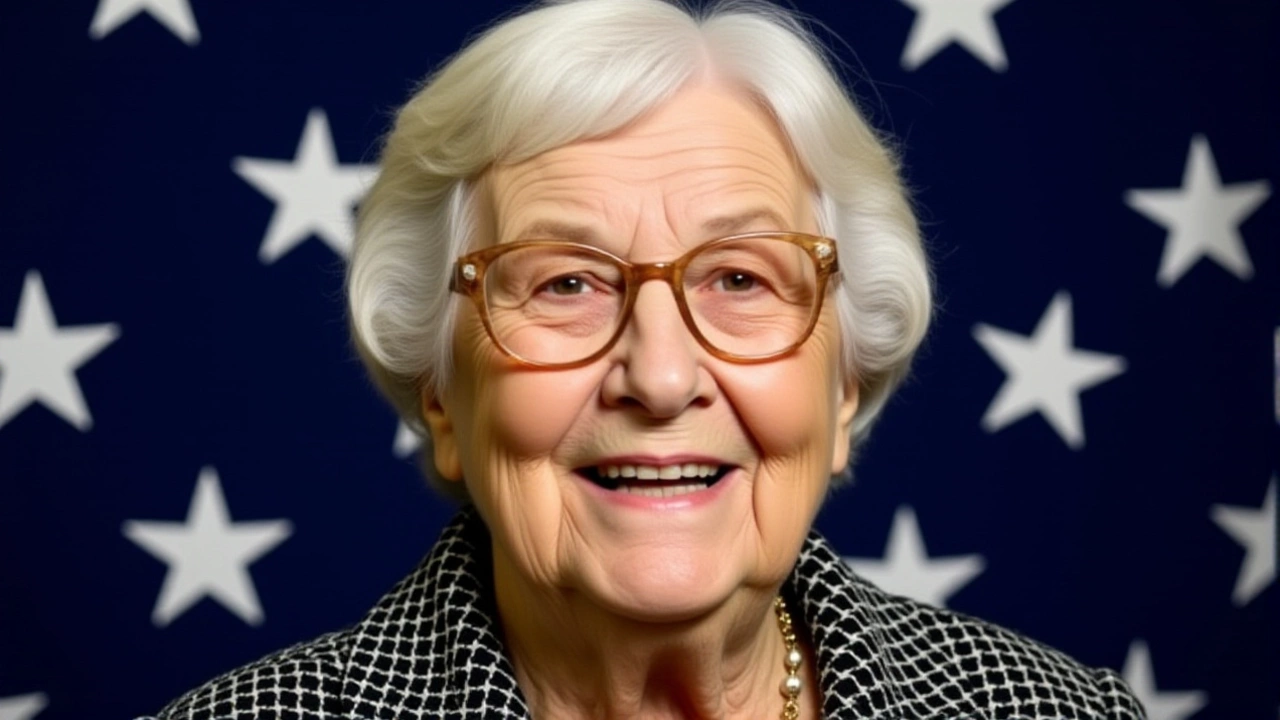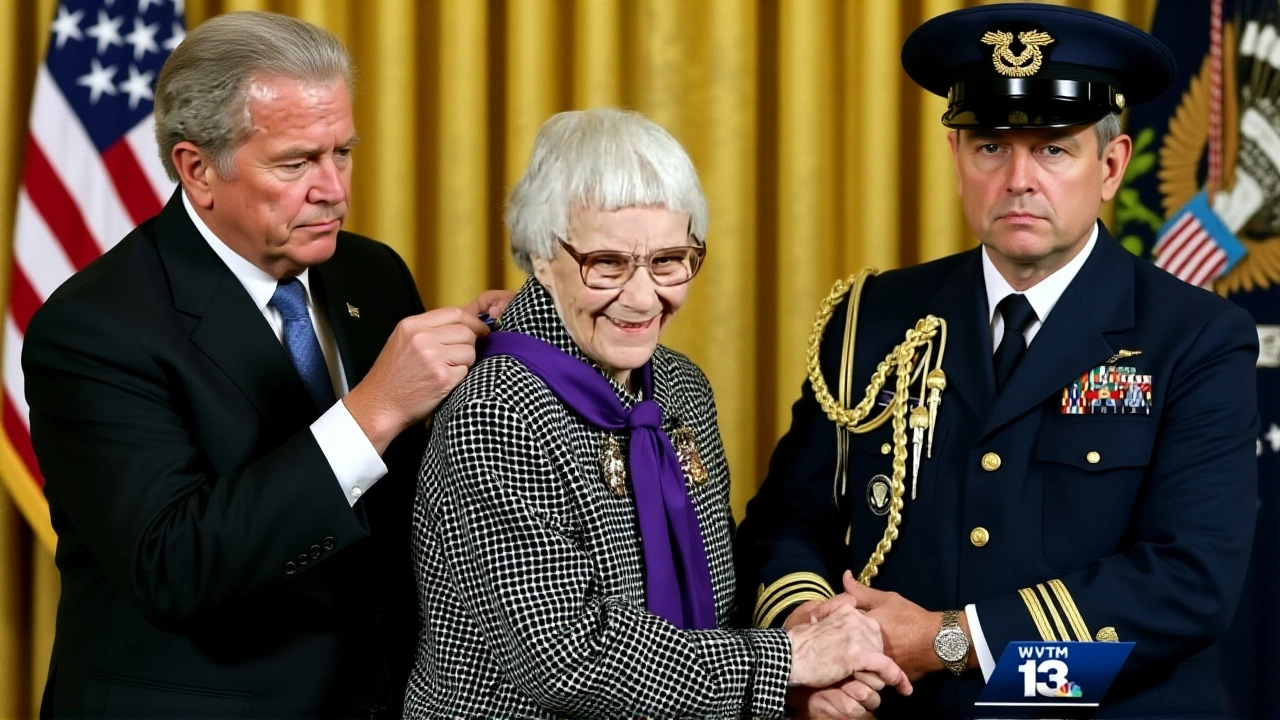When Harper Lee, born April 28, 1926, walked out of the modest kitchen in Monroeville, Alabama, nobody could have guessed the literary tidal wave she would unleash decades later. The youngest of four children of Amasa Coleman Lee, a local lawyer and state legislator, she grew up listening to courtroom drama that later echoed in her most famous novel. By the time she finished a stint at the University of Alabama in 1949, Lee had already begun sketching the world that would become To Kill a Mockingbird, a book that would shape America’s conversation about race, justice, and morality.
Early Life and Family Influences
Lee’s childhood home on Alabama Avenue was a stone’s throw from the town’s only newspaper office, where her father often consulted on legal matters. Amasa Coleman Lee not only practiced law but also served in the Alabama state legislature from 1926 to 1938, exposing young Nelle to the gritty realities of Southern politics. Family gatherings were filled with vigorous debates, and the courtroom’s moral ambiguities would later haunt To Kill a Mockingbird’s fictional courtroom scenes.
At age ten, an unexpected neighbor moved in next door: a lanky boy named Truman Streckfus Persons, who would later rewrite his name as Truman Capote. Their friendship was the kind of childhood camaraderie that fuels imagination—playing make‑believe police investigations and swapping stories about the town’s gossip. Capote would later serve as the real‑life template for the mischievous Dill in Lee’s masterpiece.
Education and Early Writing
Lee’s academic path was anything but linear. After a brief enrollment at Huntingdon College in Montgomery (1944‑45), she transferred to the University of Alabama to study law. While there, she found a voice in the campus newspaper, the Crimson‑White, writing satirical pieces and editing the humor magazine Rammer‑Jammer. Though she left three months shy of graduation in 1949, the legal training sharpened her ear for courtroom dialogue—a skill evident in the novel’s famous trial scene.
New York Years and the Road to Publication
In September 1949, Lee took the train to New York City, chasing the literary dream that many Southern writers only whispered about. She first worked a few weeks in a Manhattan bookstore, then secured a job as a reservations clerk for Eastern Air Lines and the British carrier BOAC. The choice was pragmatic: a daytime job that kept the lights on while her evenings were reserved for the mental gymnastics of novel‑writing.
According to Lee’s essay “Christmas to Me,” a modest contribution from friends finally let her quit the airline job and write full‑time. Over the next decade, she labored on a short story that gradually swelled into a full‑length manuscript. In 1957 she sent the draft to the J. B. Lippincott Company. Editors balked at its episodic nature but saw promise, assigning the keen‑eyed editor Tay Hohoff to shepherd the project.
Lee and Hohoff’s partnership was a masterclass in revision. Hohoff urged Lee to tighten the narrative, focus on the Finch family, and flesh out the character of Atticus. By the summer of 1959, the manuscript—then titled *Scout's Honor*—was ready for publication. Lippincott released it in July 1960 as To Kill a Mockingbird, and it instantly became a cultural touchstone.

Collaboration with Truman Capote
While polishing her novel, Lee accompanied Truman Capote to Kansas in 1959 for research on his true‑crime work In Cold Blood. Lee recalled the experience vividly: “the crime intrigued Truman, and I’m intrigued with crime… it was a deep calling to deep.” She spent months interviewing townsfolk, taking meticulous notes, and later helped transcribe Capote’s recordings. Capote, in turn, dedicated *In Cold Blood* to her and acknowledged her “secretarial work” in the book’s acknowledgments.
Rumors swirled for decades that Capote had ghost‑written *Mockingbird*. A 2006 discovery of a 1959 letter from Capote to his aunt clarified the truth: he had read Lee’s draft, liked it, but made no claim to authorship. The speculation, however, underscored how intertwined the two writers’ lives had become.
Legacy, Honors, and Later Works
Lee’s impact rippled far beyond literary circles. The novel’s release coincided with the height of the civil‑rights movement; the 1963 bombing of Birmingham’s Sixteenth Street Baptist Church shocked the nation, and Lee reportedly felt a profound sorrow that the violence unfolded in her home state. Scholars argue that *Mockingbird* helped humanize the South for readers across America, contributing to a broader dialogue on segregation.
In 2007, President George W. Bush awarded Lee the Presidential Medal of Freedom—the nation’s highest civilian honor. Two years later, the literary world was set ablaze when Go Set a Watchman was released, a manuscript originally written before *Mockingbird* but long thought lost. The sequel, featuring an adult Scout returning to Monroeville, reignited debates about Lee’s views on race and the evolution of her characters.
Throughout her later years, Lee split time between Manhattan and her beloved hometown, eventually moving back to Monroeville after a stroke. She lived in an assisted‑living facility where she entertained visitors with stories about Alabama’s Black Belt geography, her family genealogy, and the occasional anecdote about her childhood friend Capote.

What Comes Next: The Unfinished Manuscript Myth
For decades, literary sleuths have hunted for a rumored manuscript titled *The Reverend*, allegedly a true‑crime project about unsolved murders in central Alabama. No trace has emerged, and the mystery remains part of Lee’s mythos—an unfinished chapter that keeps scholars combing through archives, hoping to discover another facet of her genius.
Key Facts
- Born: April 28, 1926, Monroeville, Alabama
- Major work: To Kill a Mockingbird (1960)
- Collaborator: Truman Capote (research for *In Cold Blood*)
- Award: Presidential Medal of Freedom (2007)
- Final publication: Go Set a Watchman (2015)
Frequently Asked Questions
How did Harper Lee’s Alabama upbringing shape *To Kill a Mockingbird*?
Lee grew up in Monroeville, a town that directly inspired the fictional Maycomb. Her father’s legal career exposed her to courtroom dynamics, while the racial segregation she witnessed provided the moral backdrop for Atticus Finch’s defense of Tom Robinson.
What was the nature of Harper Lee’s collaboration with Truman Capote?
In 1959 Lee traveled to Kansas with Capote to help him research *In Cold Blood*. She conducted interviews, took detailed notes, and assisted with transcription. Capote acknowledged her contributions in the book’s dedication.
Why did rumors claim Capote wrote *To Kill a Mockingbird*?
The close friendship between Lee and Capote, combined with Capote’s flair for storytelling, fueled speculation. A 2006 discovery of Capote’s 1959 letter confirming he merely read the draft debunked the ghost‑writing theory.
What impact did *To Kill a Mockingbird* have on the civil‑rights era?
Published just as the civil‑rights movement intensified, the novel offered a compassionate look at Southern prejudice. Its widespread use in school curricula helped generations of readers confront racism and question the justice system.
Is there any truth to the rumored manuscript *The Reverend*?
The manuscript has never been located, and Lee’s estate has not confirmed its existence. Scholars continue to debate whether it was a working title for a project that never matured or a myth that grew from her penchant for secrecy.

Author
Maverick Leclair
Hi, I'm Maverick Leclair, a sports enthusiast with a passion for motorsports. I've spent years honing my expertise in various sporting disciplines, but my true love lies in the adrenaline-pumping world of racing. As a writer, I enjoy sharing my insights and experiences with fellow fans of high-speed pursuits. From Formula 1 to MotoGP, I've got you covered with the latest news, analysis, and in-depth features. Join me as we explore the fascinating world of motorsports together.